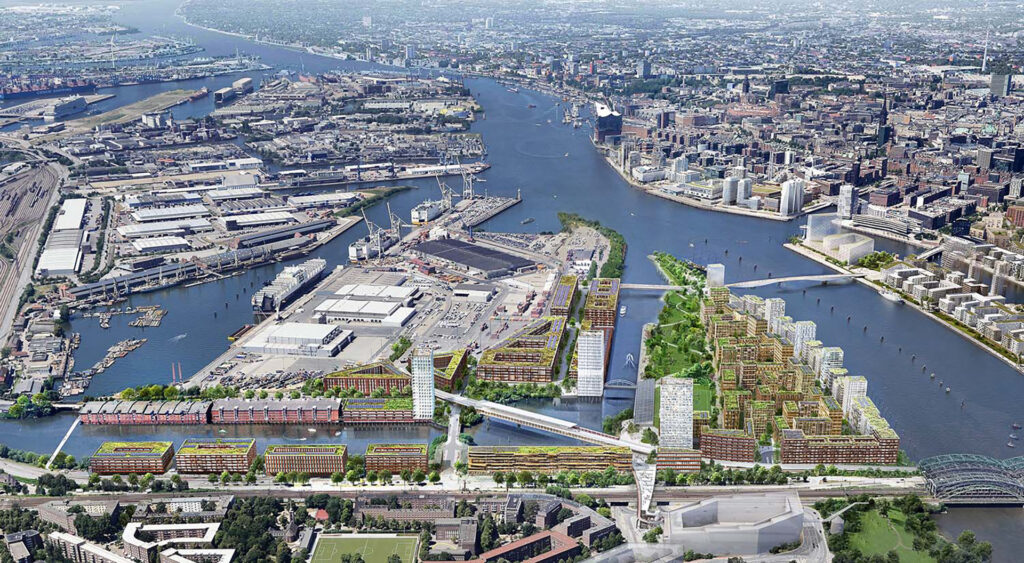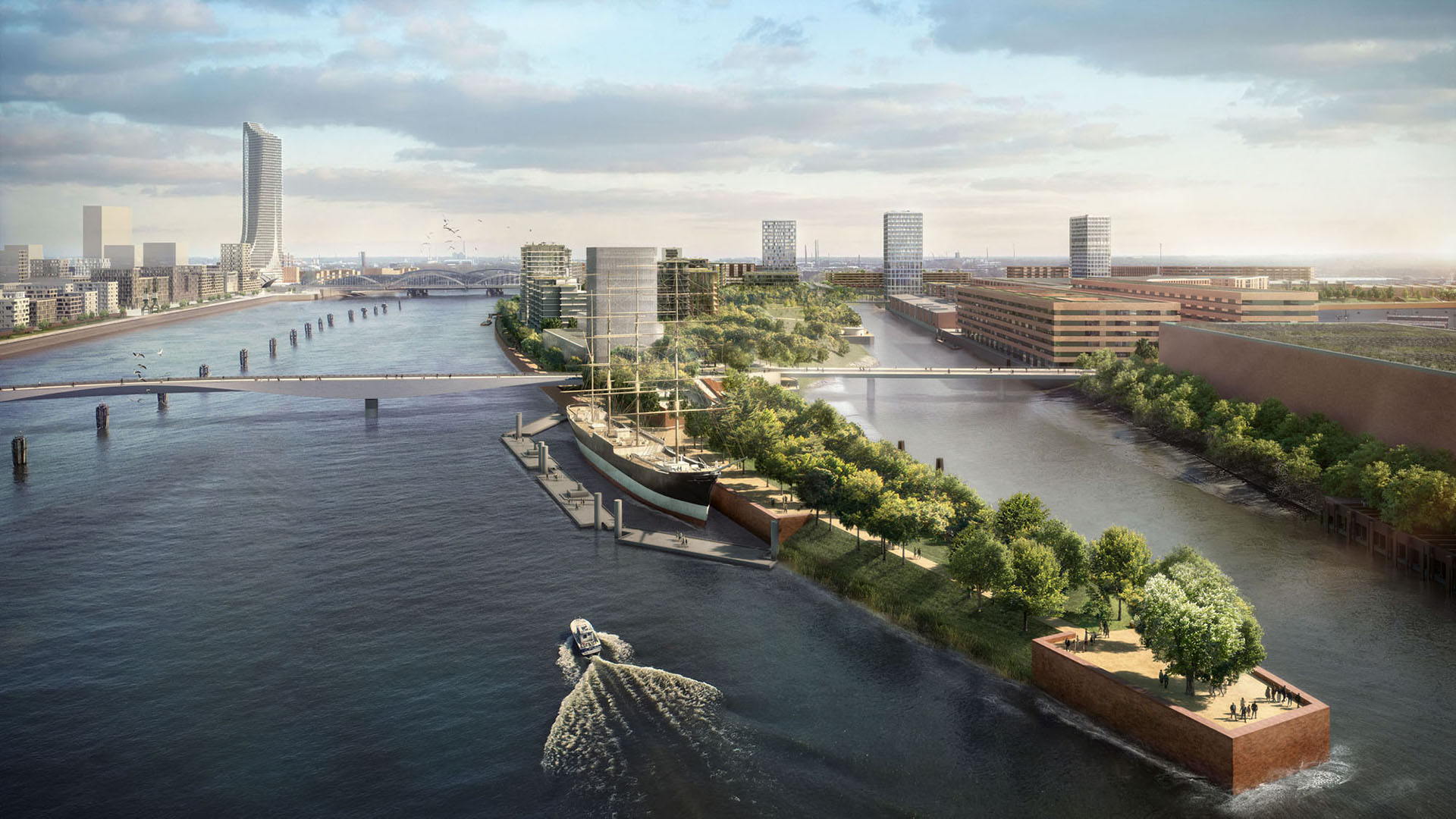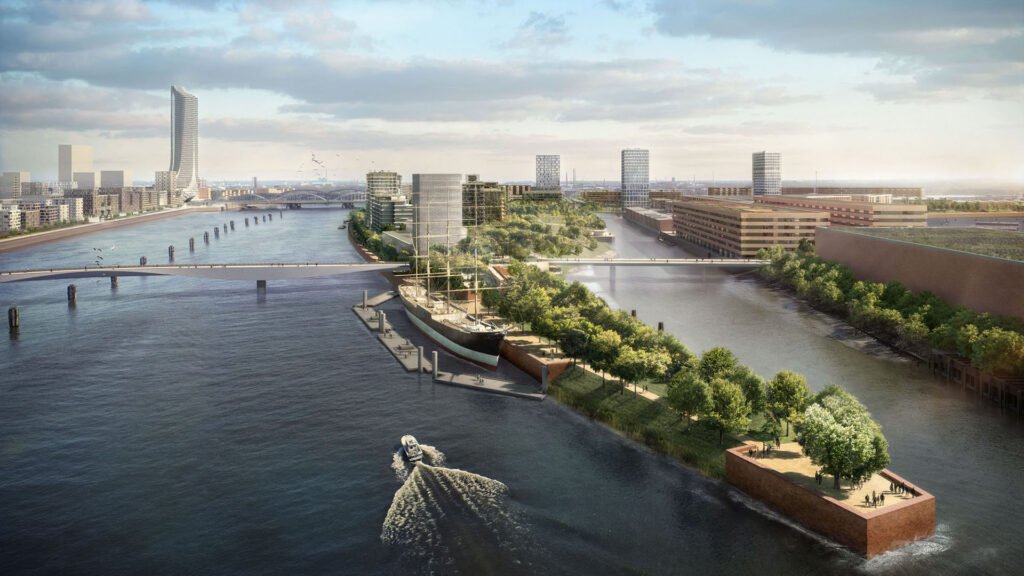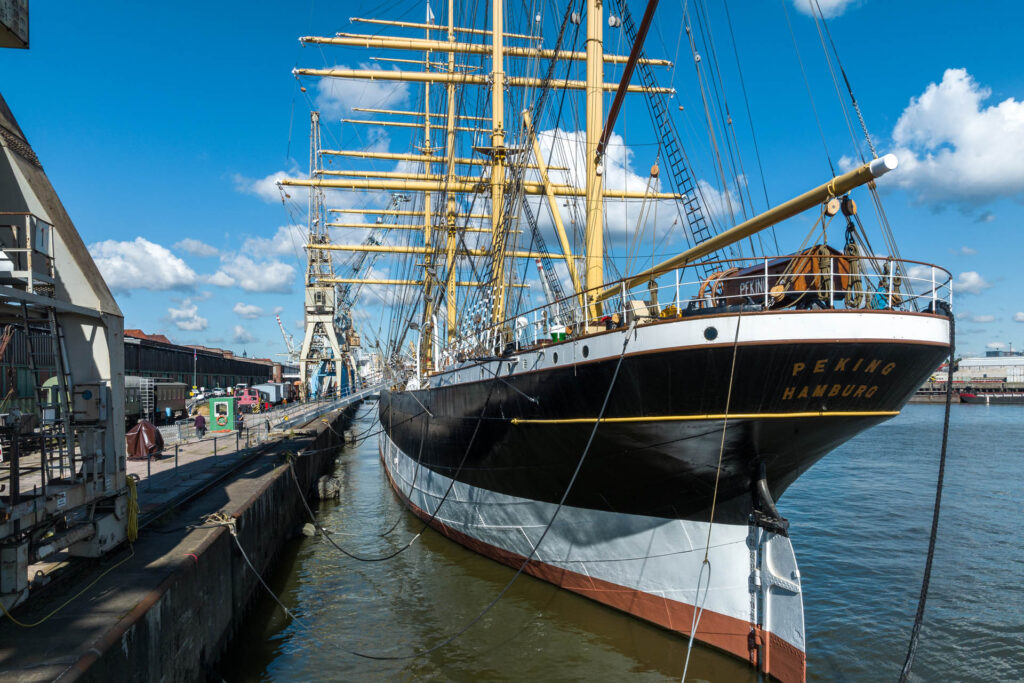German Port Museum Location Grasbrook
Ports are the most important economic hubs between water and land and enable the exchange of goods and knowledge. In Hamburg, a city whose historical and current development has been very much shaped by its port, a new museum is being created in the form of the German Port Museum, which is dedicated to the multifaceted significance of the special port interface and its role in history, today and in the future. Thanks to two locations, the museum can cover very different subject areas and mediation offers. The new building to be erected on Kleiner Grasbrook and the site around the historic 50s sheds, which is already being used as a museum, complement each other and are to be further developed into a special place of experience.




In the new building, which is expected to be completed in the second half of the 2020s, the importance of international maritime trade for people’s lives will be shown on the broad spectrum of the economic and cultural history of a port. This is the context in which the German Port Museum operates as a “museum of globalization”. Using the example of various ports and their historical development, complex contemporary issues are explained against the background of the conditions under which they were created. From the knowledge presented in the form of exhibitions, events and other mediation formats, the important role of the port in the changes, opportunities and contradictions of an increasingly globalizing economy should become clear to visitors. The German Port Museum aims to become a platform for exploring the different varieties and eras of world trade as well as the importance of ports in regional, European and global networks.
The German Port Museum itself is a good example of the constant changes that port cities are undergoing: The new building on Grasbrook will create an attractive cultural venue in an emerging district that will link Hamburg’s city center even more closely with its port-dominated periphery.
The new city district
The newly emerging Grasbrook district of Hamburg is located on the southern bank of the Norderelbe, directly opposite HafenCity. The plans, based on a design by the Herzog & de Meuron team and Vogt Landschaftsarchitekten, envisage making the Deutsches Hafenmuseum the central cultural venue of this special and new quarter. The museum is to have areas that are open to the public around the clock – in keeping with the model of a modern port, where work is carried out 24 hours a day, 7 days a week and 360 days a year. Ideas to date include placing the museum’s large maritime objects on attractively designed open spaces, making the quay edge part of the museum, and building a viewing tower with a view of Hamburg’s city center. Based on the existing plans for the entire district, an architectural competition for the German Port Museum is to be held in the near future.
The PEKING as the leading object of the German Port Museum

The “Hamborger Veermaster” PEKING, built in 1911 by Blohm & Voss for the Hamburg shipping company Laeisz, with its steel hull, four masts and technical elegance is a typical example of the Flying P-Liner, as the windjammers were once respectfully called by seafarers. The PEKING is one of the last large cargo sailing ships that were still able to compete against steam and machine ships at the beginning of the 20th century due to their speed, safety and precision. She proved this above all as a transport ship for saltpetre from Chile, which was in great demand in Europe at the time. Saltpeter (sodium nitrate) from the Atacama Desert was used at that time primarily as a nitrogen fertilizer and in black powder production.
The success of the Flying P-Liner, of which a total of 65 were built, was based not only on the perfect teamwork of the 30-strong crew but also on the reliable speed of the “flying” sailors. The increase in efficiency of steam and machine ships then heralded the end of this success story. And the great saltpetre voyages were sealed by the invention of artificial fertilizer after the First World War and the opening of the Panama Canal.
Funding and support
In 2015, the Budget Committee of the German Bundestag had made a total of 120 million euros available to the Free and Hanseatic City of Hamburg for the construction of a German Port Museum and for the retrieval and restoration of the four-masted barque PEKING. To meet the complex task of restoring the ship and implementing the museum at two locations, the Budget Committee of the German Bundestag approved a further 65.5 million euros for the overall project on November 14, 2019.
SHMH is working intensively on the content concept for the future German Port Museum. To this end, three international symposia and several workshops have been held so far, during which the content guidelines for the museum project have been defined and from which networks of experts from various disciplines have emerged.
Together with the operators of the POMMERN, the PASSAT and the KRUZENSHTERN, the network “Flying P-Liner Heritage Fleet” was founded in order to incorporate their experiences into the content presentation on the PEKING. In parallel, the four-masted barque PEKING was restored at the Peters shipyard in Wewelsfleth under the auspices of the Hamburg Maritime Foundation.
The construction of the German Port Museum and the restoration and transfer of the four-masted barque PEKING are being fully funded by the Federal Government Commissioner for Culture and the Media on the basis of a resolution of the German Bundestag with a total of 185.5 million euros.

The preparatory measures for the arrival of the PEKING in Hamburg as well as the commissioning of the ship are supported by the Ministry of Culture and Media of the Free and Hanseatic City of Hamburg.


